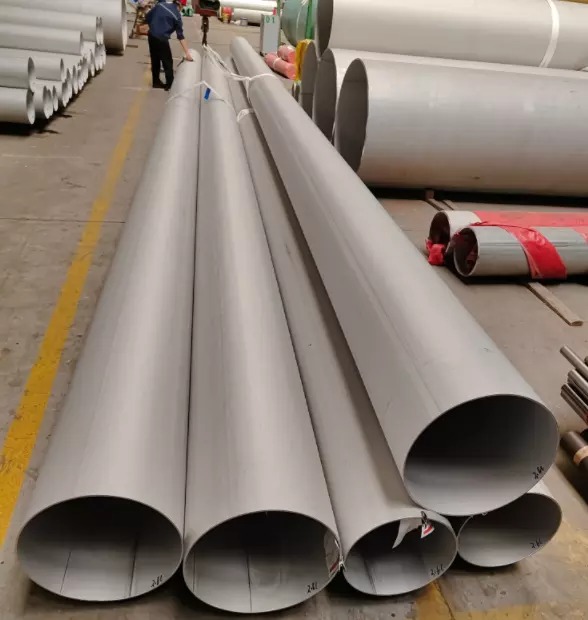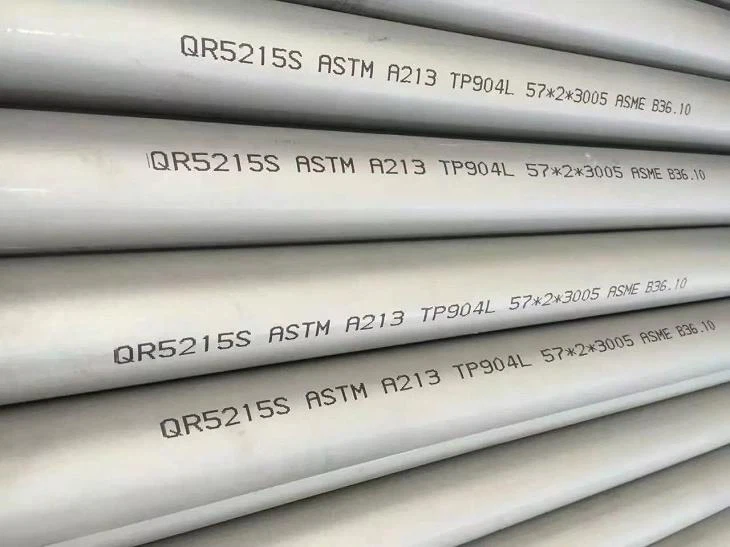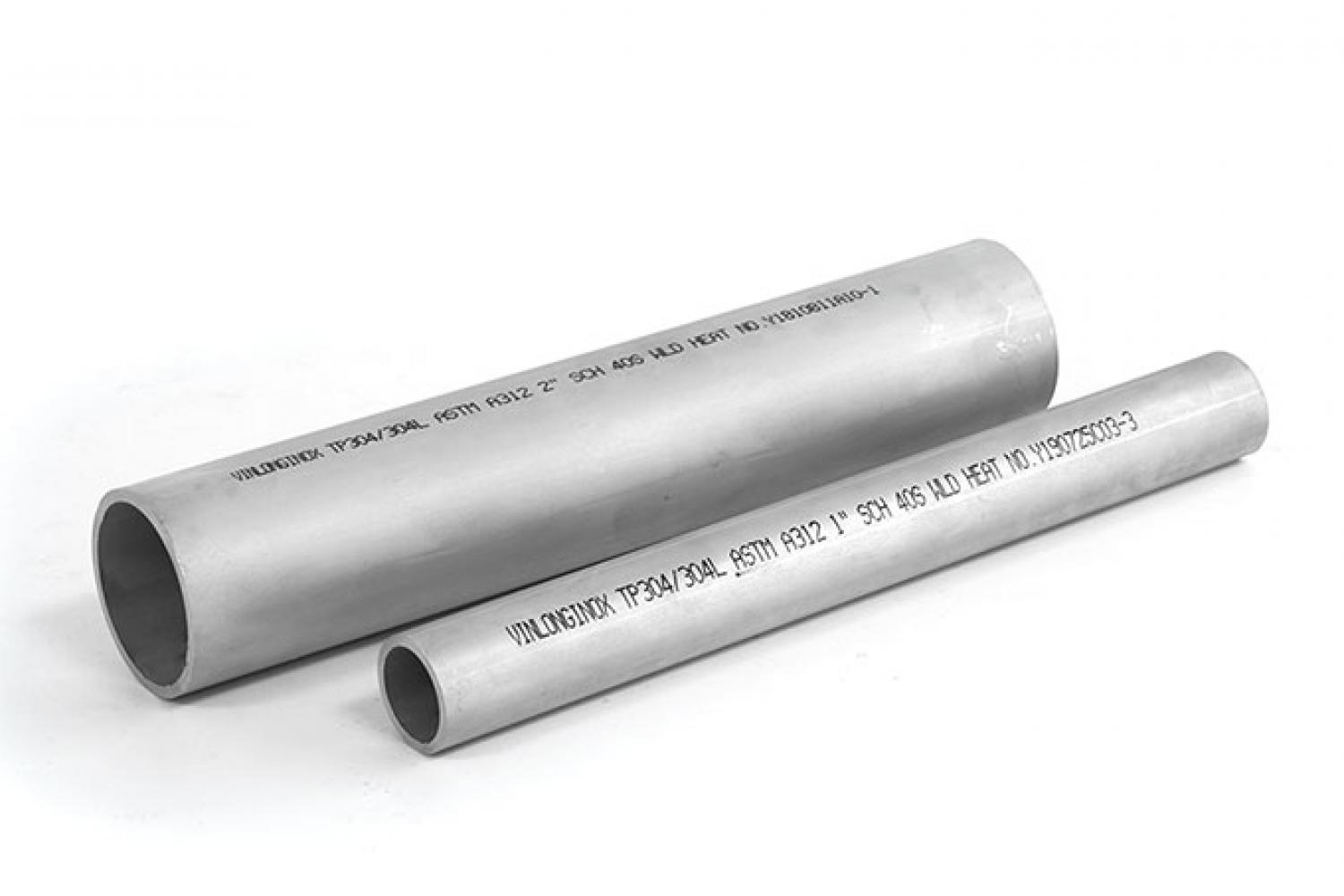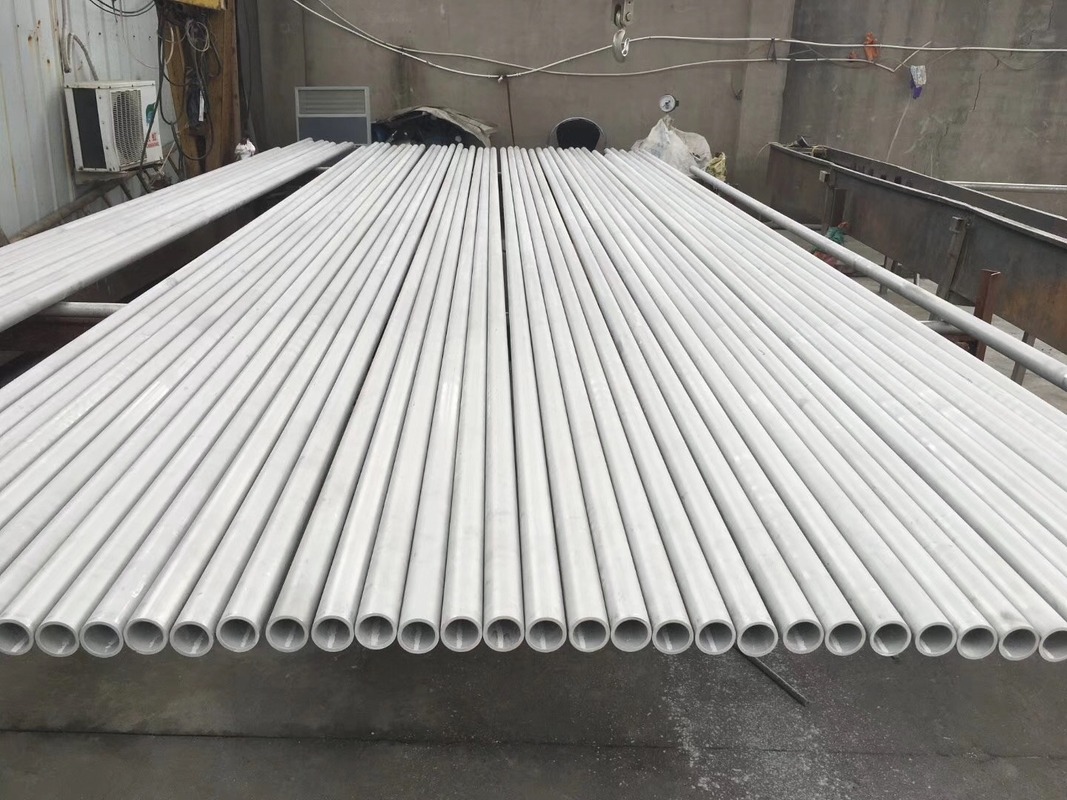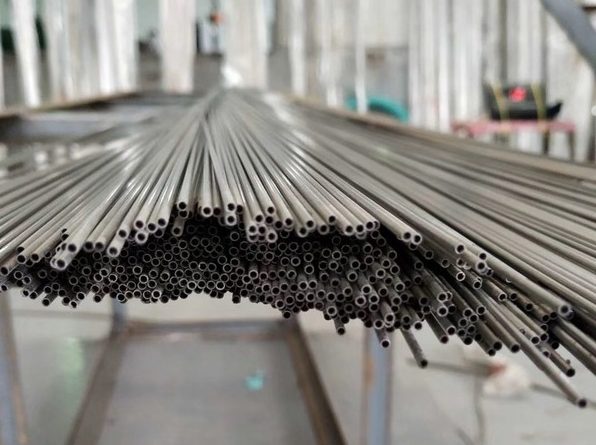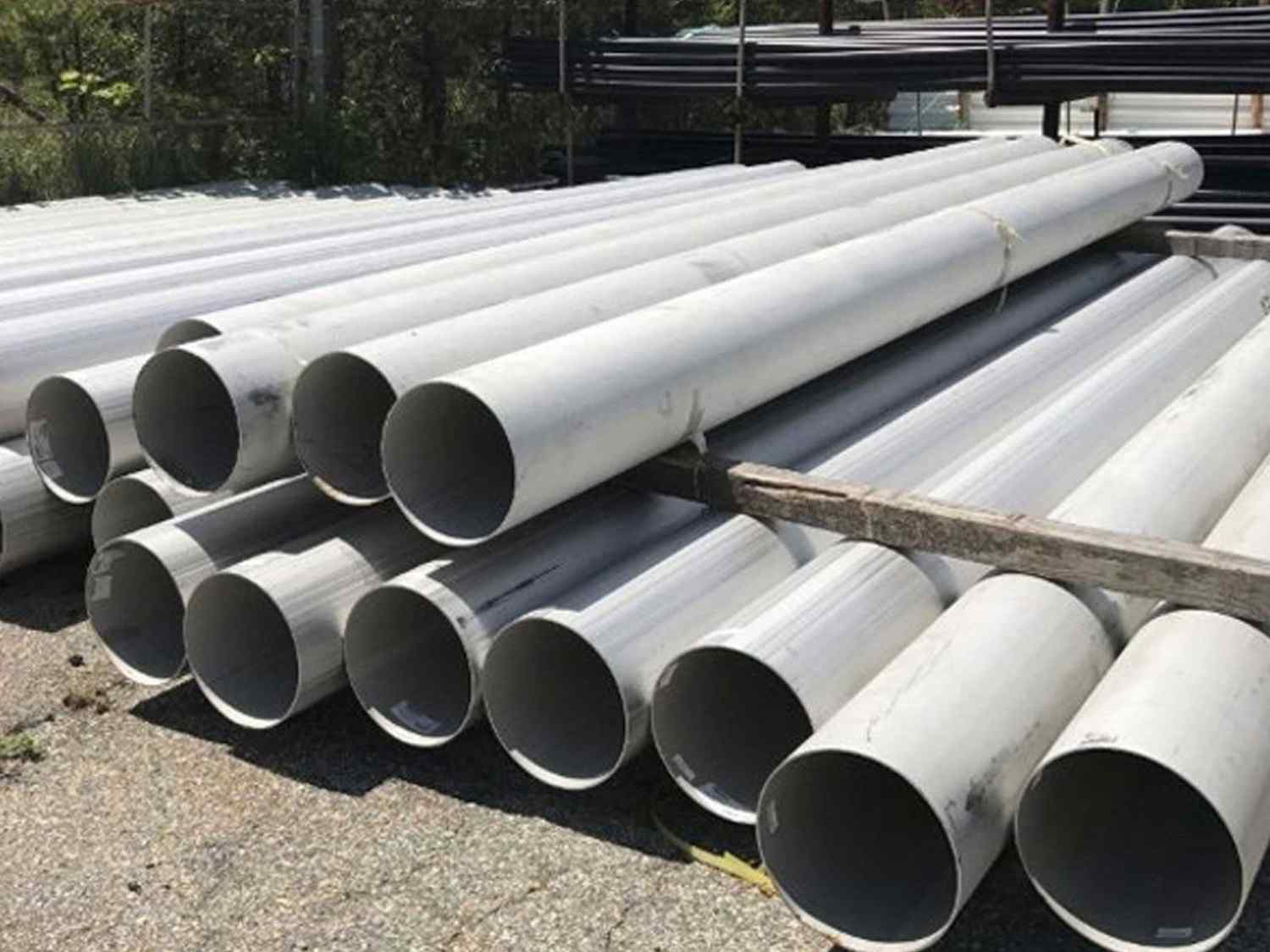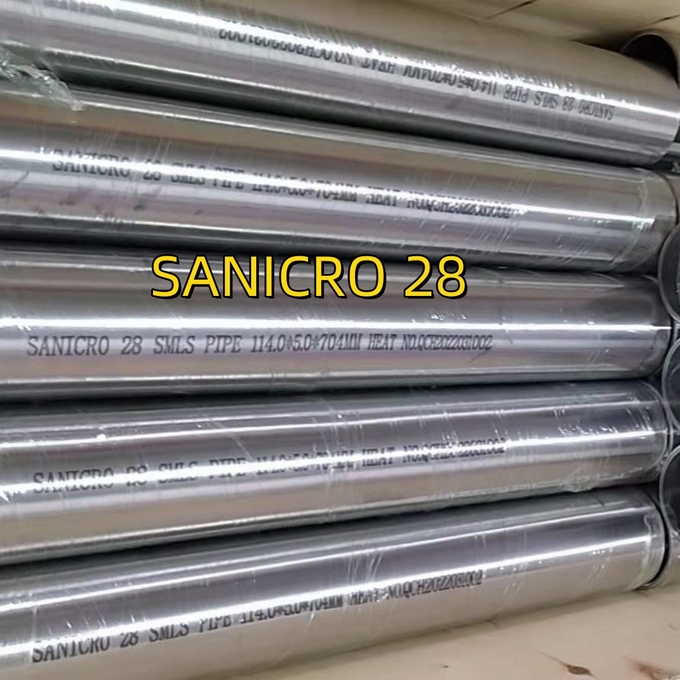ASTM A358 Stainless Steel Pipe

ASTM A358 Stainless Steel Pipe
Introduction
ASTM A358 is the standard specification for electric-fusion-welded austenitic chromium-nickel stainless steel pipe suitable for high-temperature and general corrosive service. This specification covers five classes of pipes, which are fabricated from plates or sheets and welded with or without the addition of filler metal. These pipes are typically used in applications requiring high strength and corrosion resistance.
ASTM A358 Specifications
Scope
ASTM A358 covers electric-fusion-welded austenitic chromium-nickel stainless steel pipes, intended for high-temperature and general corrosive services. The specification includes five classes:
- Class 1: Pipe is double welded by processes employing filler metal in all passes and is radiographed completely.
- Class 2: Pipe is double welded by processes employing filler metal in all passes. No radiography is required.
- Class 3: Pipe is single welded by processes employing filler metal in all passes and is radiographed completely.
- Class 4: Same as Class 3 except the weld pass exposed to the inside pipe surface may be made without the addition of filler metal.
- Class 5: Pipe is double welded by processes employing filler metal in all passes and is spot radiographed.
Chemical Composition
The chemical composition of ASTM A358 stainless steel pipes varies depending on the grade. The following table summarizes the typical chemical composition for some common grades:
| Element | TP304 | TP304L | TP316 | TP316L |
|---|---|---|---|---|
| Carbon (C) | 0.08 max | 0.03 max | 0.08 max | 0.03 max |
| Manganese (Mn) | 2.00 max | 2.00 max | 2.00 max | 2.00 max |
| Phosphorus (P) | 0.045 max | 0.045 max | 0.045 max | 0.045 max |
| Sulfur (S) | 0.030 max | 0.030 max | 0.030 max | 0.030 max |
| Silicon (Si) | 1.00 max | 1.00 max | 1.00 max | 1.00 max |
| Chromium (Cr) | 18.0-20.0 | 18.0-20.0 | 16.0-18.0 | 16.0-18.0 |
| Nickel (Ni) | 8.0-11.0 | 8.0-13.0 | 10.0-14.0 | 10.0-14.0 |
| Molybdenum (Mo) | – | – | 2.00-3.00 | 2.00-3.00 |
Mechanical Properties
The mechanical properties of ASTM A358 stainless steel pipes are suitable for high-temperature and general service applications. The typical mechanical properties include:
- Tensile Strength: Minimum 515 MPa (75 ksi)
- Yield Strength: Minimum 205 MPa (30 ksi)
- Elongation: Minimum 35% in 2 inches
Pipe Sizes
ASTM A358 pipes are available in various sizes, indicating the outside diameter (OD) and wall thickness. The sizes can range from large-diameter pipes used in industrial applications to smaller pipes for specific engineering needs.
Dimensions
The dimensions of ASTM A358 pipes are specified by their outside diameter (OD) and wall thickness. Standard sizes range to accommodate different application requirements. Common dimensions include:
- Outside Diameter (OD): 8 inches to 144 inches
- Wall Thickness: Varies based on application requirements.
Tolerances
ASTM A358 specifies precise tolerances to ensure the pipes meet quality and performance standards. These tolerances include:
- Outside Diameter (OD): ±1% of the specified OD
- Wall Thickness: ±10% of the specified wall thickness
- Length: Pipes are typically supplied in random lengths, with specific tolerances based on customer requirements.
Wall Thickness & Tolerance
The wall thickness of ASTM A358 pipes is critical for their performance in high-temperature and corrosive environments. Tolerances on wall thickness are essential to ensure consistent performance. The standard tolerances include:
- Wall Thickness Tolerance: ±10% of the specified wall thickness.
- Minimum Wall Thickness: The minimum wall thickness must not be less than 87.5% of the specified nominal wall thickness.
Materials and Manufacture
Materials
ASTM A358 pipes are made from austenitic stainless steels, known for their excellent resistance to oxidation and corrosion at high temperatures. Common grades include TP304, TP304L, TP316, and TP316L, each offering specific advantages for different applications.
Manufacture
The manufacturing process for ASTM A358 pipes involves several steps to ensure quality and performance:
- Plate or Sheet Selection: High-quality austenitic stainless steel plates or sheets are selected for fabrication.
- Forming: The plates or sheets are formed into cylindrical shapes using roll forming or other methods.
- Welding: The formed cylindrical shapes are welded using electric-fusion welding processes. The type of welding (single or double) and radiography requirements depend on the class of the pipe.
- Heat Treatment: After welding, the pipes may undergo heat treatment to restore their mechanical properties and corrosion resistance.
- Finishing: The pipes are finished to achieve the desired surface quality and dimensions.
Tests
To ensure the quality and performance of ASTM A358 pipes, several tests are conducted:
Hydrostatic Test
A hydrostatic test is performed to verify the pipes’ ability to withstand internal pressure. The pipes are filled with water and pressurized to a specified level, typically 1.5 times the design pressure, to check for leaks and structural integrity.
Nondestructive Testing (NDT)
Nondestructive testing methods are used to detect internal and surface defects without damaging the pipes. Common NDT methods include:
- Radiographic Testing: X-rays or gamma rays are used to inspect the internal structure and weld quality.
- Ultrasonic Testing: High-frequency sound waves are used to detect internal flaws.
Mechanical Tests
Mechanical tests are conducted to verify the pipes’ mechanical properties, including:
- Tensile Test: Measures tensile strength, yield strength, and elongation.
- Hardness Test: Verifies hardness levels to ensure compliance with specified limits.
- Flattening Test: Checks the pipe’s ability to withstand deformation without cracking.
Heat Treatment
Heat treatment is an essential process for enhancing the properties of ASTM A358 pipes. The specific heat treatment process depends on the grade and application requirements:
Annealing
Annealing involves heating the pipes to a temperature above the critical temperature (usually around 1040-1120°C) and then rapidly cooling them in water or air. This process dissolves precipitated carbides and restores the material’s corrosion resistance and ductility.
Stress Relieving
Stress relieving involves heating the pipes to a temperature lower than the critical temperature (usually around 400-500°C) and then cooling them slowly. This process relieves internal stresses caused by manufacturing processes such as welding.

